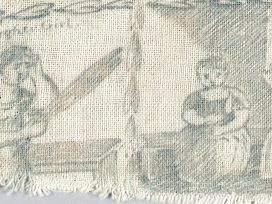
While book publishing is an ailing industry, children’s books are booming. But political attacks and censorship are also threatening this thriving sector.
Among Eurozine network partners at the end of 2012, there were 20 journals with female and 55 with male editors-in-chief. In addition to which, five were published under both female and male co-editors-in-chief. During the course of the same year, of the 143 original articles that Eurozine published (translations not included), 90 were by male and 42 by female authors; an additional 11 were by both male and female co-authors.
These figures speak for themselves. However, Eurozine partner journals are not unique in being dominated by male editors and contributors. In June this year, The Guardian published a survey comparing the major UK book review pages. It presented figures concerning the gender of both reviewers and of the book authors under review during the period of one month, first in 2012 and then once more in 2013. While every publication is unique, overall, the number of women reviewers tended to be on the rise. Nonetheless, male reviewers and authors continued to dominate, even more so in non-fiction than in fiction.
The new Eurozine survey on gender and cultural journals also covers how gender representation changes over time and according to content. We asked the editors of selected partner journals to provide figures on and discuss gender representation both within the organization that publishes the journal and among contributors, supporting entities and networks.
The organizations publishing cultural journals are invariably relatively small, with the average number of people working on the journal rarely breaking into double figures. Core staff turnover tends to be low, with any shortfalls being made up through volunteers and freelancers. Resources, particularly where financing is concerned, are almost always limited. Thus there is often limited scope for immediate change as regards gender representation in these small, relatively stable structures operating in precarious circumstances with limited finances.Nevertheless, the survey shows that a range of strategies for dealing with imbalances in gender representation can be and have been called upon. These include introducing a policy to ensure all new appointments to the editorial board are gender neutral and redefining the subject area on which the journal focuses. The latter applies particularly to areas where, traditionally, men have dominated heavily, such as politics. Further initiatives include devoting a section of a journal’s website to feminist issues, such that these can be discussed in a more informal manner than is often possible in print.
However, reservations were voiced about applying strict policies on gender representation to already fragile organizations. Opinion was also divided as to the relation between gender and content, with some editors insisting that the only criteria for publishing an author’s work was the quality of the work itself and the author’s area of specialization – but not gender. This was actually a reason that several journals provided for not participating in the survey.
In some answers, further reference was made to more general developments outside the cultural journals sector. In Slovenia, recent uprisings have brought with them a reinvigorated women’s movement. In the UK, there is a new initiative to promote women specialists in journalistic circles through the compilation of an online database, as mentioned in Dawn Foster’s article on women in journalism. In Norway, the focus on gender representation is already well established in many sectors of society, though there remains work to be done in the upper echelons where the predominance of men remains most ingrained. A similar process is beginning to take effect in Poland, where the hope for further gains in gender equality remains strong.
Though the relation between these general trends and content is not always straightforward, gender invariably has some place in the minds of all editors. And while specialist journals focusing on feminist theory would like to see more mainstream treatments of the issues they deal with on a permanent basis, mainstream cultural journals are in general seeking new ways to deepen their treatment of gender-related issues. There was a tendency to think creatively, or at least create the frameworks necessary to do so on such matters. However, there was surprisingly little support for quotas for women in cultural journals – a measure examined in more depth by Lena Brandauer in an accompanying article.
Respondents were selected with a view to covering the widest possible range of content and geographical locations. Every publication has a unique position on gender and the measures taken in order to handle associated issues. This includes journals approached within the network that declined to respond to the survey beyond commenting that it was not relevant to their activities.
The questionnaire sent to respondents can be viewed here.
Published 14 November 2013
Original in English
First published by Eurozine
© Eurozine
PDF/PRINTSubscribe to know what’s worth thinking about.

While book publishing is an ailing industry, children’s books are booming. But political attacks and censorship are also threatening this thriving sector.

Being diagnosed with ADHD can be a relief for those who have struggled long and hard to adopt constraining social norms. For neurodivergent women, masking can lead to poor mental health, substance abuse and hyper-sexuality. Vox Feminae takes a first-hand dive into positive coping mechanisms for the inattentive and/or hyperactive.